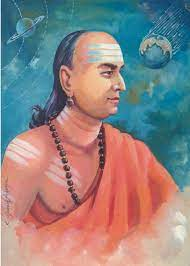Haryana Switch to Hindi
Haryana Big Move on Lal Dora Properties
Why in News?
Recently, The Haryana government has launched a comprehensive registry initiative to resolve long-standing issues related to Lal Dora properties in urban areas.
- Under the Chief Minister Urban Body Ownership Scheme, both property owners and long-term tenants are set to benefit.
Key Points
- Lal Dora delineations were established in 1908 during British rule, marking areas outside formal settlements for agriculture.
- These lands have been exempt from building bylaws and municipal regulations, but owners often faced challenges in proving ownership, hindering property transactions and access to financial services.
- The state government implemented measures to free villages from Lal Dora restrictions, allowing occupants to obtain property rights.
- The Svamitva Scheme aims to streamline property ownership rights and boost economic activities in Lal Dora areas.
- The Chief Minister will distribute property certificates and registries to beneficiaries at a state-level function in Gurugram, marking a pivotal moment for urban development in Haryana.
Mukhymantri Shehri Nikay Swamitva Yojana
- It is designed to give ownership of Commercial Land of Municipalities running on rent or lease for more than 20 years in the State.
- Under this Scheme, individuals who have been occupying the land for 20 years through rent or lease are being given Ownership Rights on payment of up to 80% of the Collector Rate.
- Similarly, according to the limit of years occupied by the land, the Collector Rate will have to be paid at different rates, such as 75% of the Collector Rate for 25 years, 70% for 30 years, 65% for 35 years, 60% for 40 years, 55% for 45 years. There is a provision to give Ownership Rights on payment of 50% for 50 years.
Svamitva Scheme
- SVAMITVA stands for Survey of Villages and Mapping with Improvised Technology in Village Areas.
- It is a center sector scheme which was launched nationally on the occasion of National Panchayati Raj Day on 24th April 2021.
- It aims to provide an integrated property validation solution for rural India.
- The demarcation of rural inhabited areas would be done using Drone survey and CORS (Continuously Operating Reference Stations) Networks which provides mapping accuracy of 5 cm.
- This would provide the ‘record of rights’ to village household owners possessing houses in inhabited rural areas in villages.
- It will cover around 6.62 Lakh villages of the entire country during 2021-2025.
Uttarakhand Switch to Hindi
Doon Silk
Why in News?
Doon Silk is a label under the Uttarakhand Cooperative Resham Federation (UCRF) that is committed to maintaining and restoring the ancient silk-weaving traditions of Uttarakhand.
Key Points
- The brand offers a range of products made from natural fibers such as silk, wool, cotton, bichhua (nettle), and hemp, all selected for their minimal environmental impact.
- Doon Silk's products are a testament to the talent and artistry of Uttarakhand's farmers, reelers, weavers, craftspeople, and dyers.
- The brand's dedication to quality and craftsmanship has helped it achieve a strong foothold in both national and global markets.
- By concentrating on handloom methods, Doon Silk maintains traditional techniques and provides sustainable job prospects to more than 6,000 people in Uttarakhand.
- Doon Silk's 100% natural fiber guarantee reflects its dedication to purity.
Uttarakhand Cooperative Resham Federation (UCRF)
- It was founded in the year 2002, in Dehradun with the purpose of carrying out the post-cocoon activities of the Sericulture Department of Uttarakhand.
- With over 20 years of experience, the organization has revitalized the traditional silk weaving of Uttarakhand, focusing on using wool and silk blended fabrics.
- UCRF and its brand Doon Silk prioritize handloom production using natural fibers like silk, wool, cotton, nettle, and hemp to minimize harm to the environment and ecosystem.
Uttar Pradesh Switch to Hindi
Kanwar Yatra
Why in News?
Recently, the Supreme Court halted the controversial orders from the governments of Uttar Pradesh, Uttarakhand, and Madhya Pradesh, which required the display of owners' names at hotels, shops, eateries, and dhabas along the route of the 'Kanwar yatra' (holy expedition).
Key Points
- The Kanwar Yatra is a Hindu pilgrimage in the month of Shravana, by Lord Shiva devotees.
- The devotees travel to pilgrimage places like Haridwar, Gaumukh, Gangotri in Uttarakhand, Sultanganj in Bihar, Prayagraj, Ayodhya, and Varanasi in Uttar Pradesh, and return by carrying Ganga water in kanwars to seek the blessings of Shiva.
- The water is offered to Shiva temples, including the 12 Jyotirlingas across India and other shrines like the Pura Mahadev Mandir and Augharnath in Uttar Pradesh, the famous Kashi Vishwanath temple, and the Baba Baidyanath Temple in Deoghar, Jharkhand. The ritual is known as Jal Abhishek.
12 Jyotirlingas
- A Jyotirlinga is a shrine where Lord Shiva is worshipped in the form of a Jyotirlingam.
- Each Jyotirlinga is a different manifestation of Lord Shiva.
- There are currently 12 main Jyotirlingas in India. These are:
- Somnath Jyotirlinga in Gir, Gujarat
- Mallikarjuna Jyotirlinga in Srisailam, Andhra Pradesh
- Mahakaleshwar Jyotirlinga in Ujjain, Madhya Pradesh
- Omkareshwar Jyotirlinga in Khandwa, Madhya Pradesh
- Baidyanath Jyotirlinga in Deoghar, Jharkhand
- Bhimashankar Jyotirlinga in Maharashtra
- Ramanathaswamy Jyotirlinga in Rameshwaram, Tamil Nadu
- Nageshwar Jyotirlinga in Dwarka, Gujarat
- Kashi Vishwanath Jyotirlinga in Varanasi, Uttar Pradesh
- Trimbakeshwar Jyotirlinga in Nasik, Maharashtra
- Kedarnath Jyotirlinga in Rudraprayag, Uttarakhand
- Ghrishneshwar Jyotirlinga in Aurangabad, Maharashtra
Jharkhand Switch to Hindi
Mukhyamantri Behan-Beti Swavalamban Protsahan Yojana
Why in News?
Recently, the Jharkhand Chief Minister announced that the government would soon organize village-level camps to enroll women in a financial assistance scheme, which provides Rs. 1,000 per month.
Key Points
- The announcement was made while inaugurating and laying the foundation stone of various development schemes worth Rs. 88 crore at Rajmahal in Sahibganj district.
- The ‘Aapki Sarkar-Aapke Dwar’ programme is going to be launched again soon in which the state government will give Rs. 1,000 to eligible women above 21 years and below 50 years of age from families living below the poverty line.
- About 40 lakh women will come under the purview of this scheme and they will get the benefits of the scheme.
- The scheme is renamed as Mukhyamantri Behan-Beti Swavalamban Protsahan Yojana.
Bihar Switch to Hindi
Bihar's 'Special Category' Status Denied
Why in News?
Recently, The Centre rejected the request for ‘special category’ status for Bihar during the all-party meeting.
Key Points
- No new states are being awarded ‘special category’ status at present, as the Indian Constitution does not accommodate such classification.
- Bihar is requesting both special state status and a distinct financial package. The call for special status for Bihar has persisted since the state was split into Bihar and Jharkhand.
- The Gadgil formula:
- The issue of special category status was first discussed in a National Development Council (NDC) meeting in 1969. During this session, the DR Gadgil Committee proposed a formula for distributing central assistance to state plans in India.
- Prior to this, there was no specific formula for fund allocation, and grants were allocated based on individual schemes.
- The Gadgil Formula, which received NDC approval, prioritized the needs of special category states like Assam, Jammu & Kashmir, and Nagaland in the allocation of Central assistance.
- In 1969, the 5th Finance Commission acknowledged the historical challenges faced by certain regions and introduced the special category status.
- This designation granted specific disadvantaged states special benefits, including central assistance and tax relief.
- The National Development Council then allocated Central Plan Assistance to these states based on this status.
- Until the financial year 2014-2015, the 11 states with special category status enjoyed various benefits and incentives.
- However, with the dissolution of the Planning Commission and the establishment of the NITI Aayog in 2015, the recommendations of the 14th Finance Commission resulted in the cessation of grants based on the Gadgil Formula.
- Consequently, the share of the divisible pool allocated to all states was increased from 32% to 42%.
- The issue of special category status was first discussed in a National Development Council (NDC) meeting in 1969. During this session, the DR Gadgil Committee proposed a formula for distributing central assistance to state plans in India.
Madhya Pradesh Switch to Hindi
Ujjayini Meridian
Why in News?
According to a new Class-6 NCERT textbook for social science, India had a prime meridian of its own much ahead of the Greenwich meridian and it was called "madhya rekha", which passed through the city of Ujjain in Madhya Pradesh.
Key Points
- Madhya rekhā (or 'middle line') passed through the city of Ujjayinī (today Ujjain), which was a reputed centre for astronomy over many centuries.
- Varāhamihira, a famous astronomer, lived and worked there some 1,500 years ago.
- Indian astronomers were aware of the concepts of latitude and longitude, including the need for a zero or prime meridian.
- The Ujjayinī meridian became a reference for calculations in all Indian astronomical texts.
Varahamihira (505–587 CE)
- He was a renowned astronomer, mathematician, and astrologer.
- Notable works:
- Brihat Samhita (comprehensive work on astronomy, astrology, architecture, gemology, agriculture, mathematics, and gemology).
- He wrote about chief aspects of Jyotisha (astrology) like horoscopy.
- He was the first to state Panchasiddhantika (book on mathematical astronomy) that the ayanamsa (precession of the equinoxes) lasted for 50.32 seconds.
- He first described gravity as an attractive “Force”, which binds various things together.
- Brihat Samhita (comprehensive work on astronomy, astrology, architecture, gemology, agriculture, mathematics, and gemology).










%20MPPCS%202025%20Desktop%20E.jpg)
%20MPPCS%202025%20Mobile%20E%20(1).jpg)



.jpg)






.png)
.png)



 PCS Parikshan
PCS Parikshan


